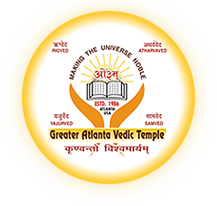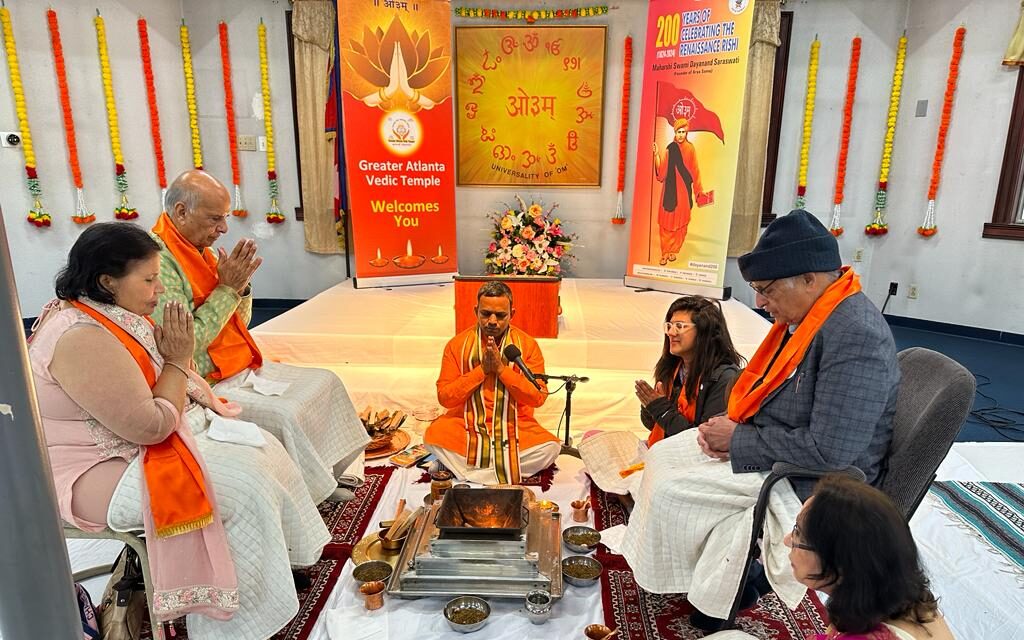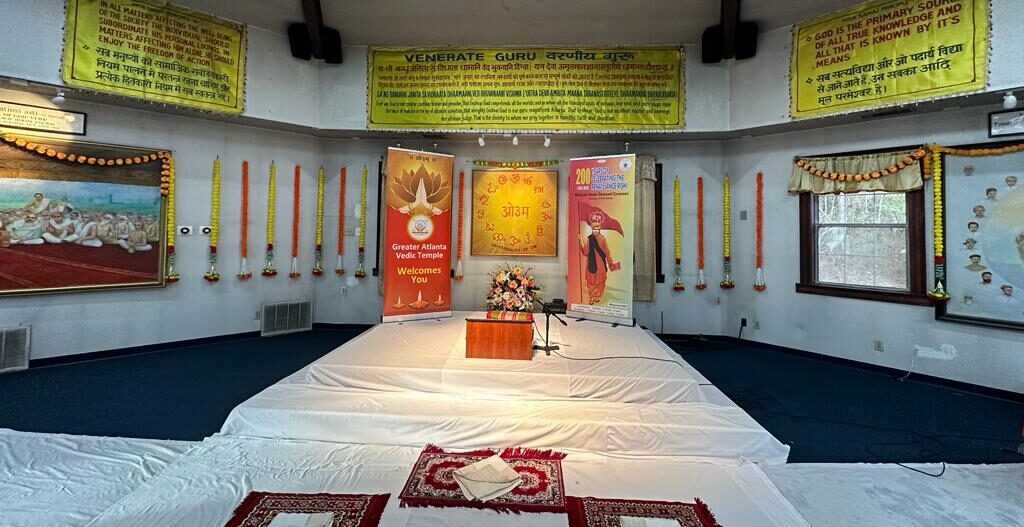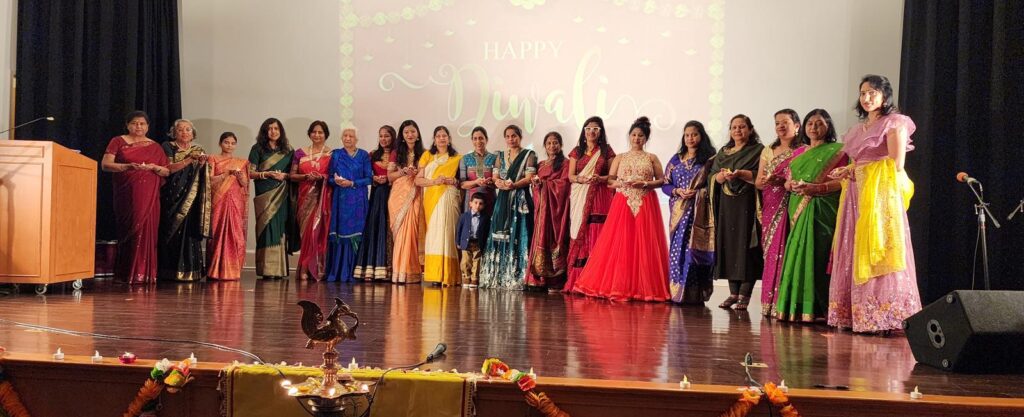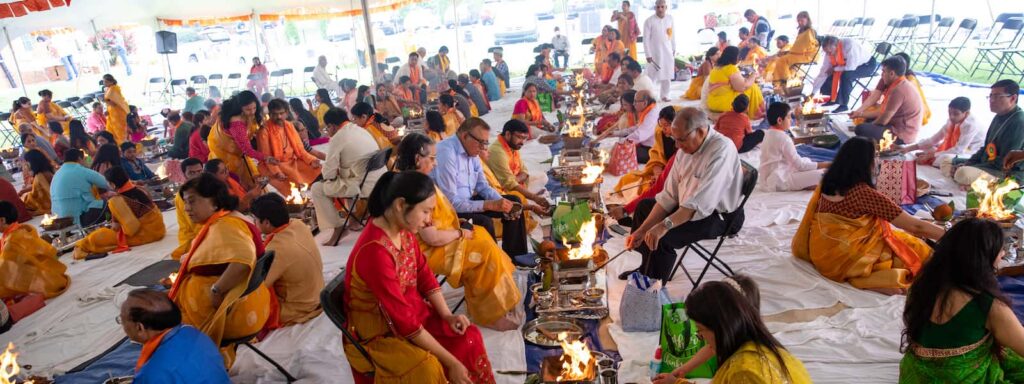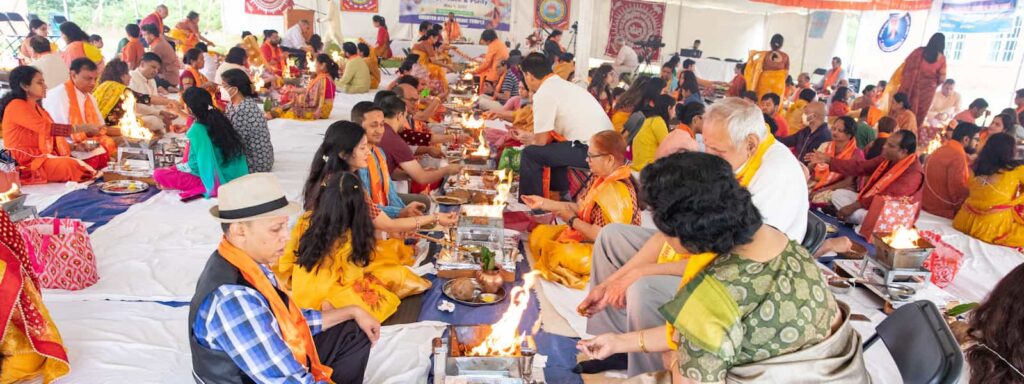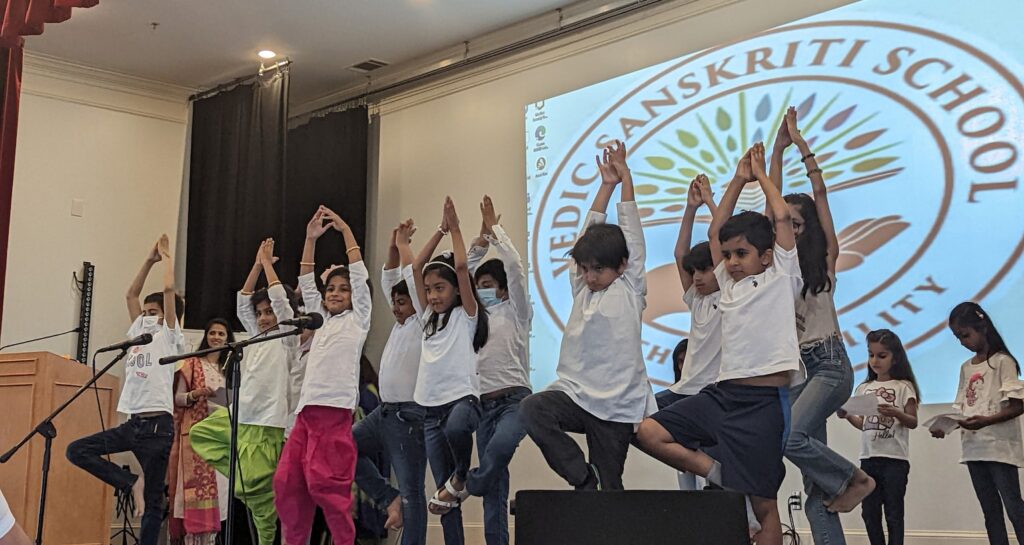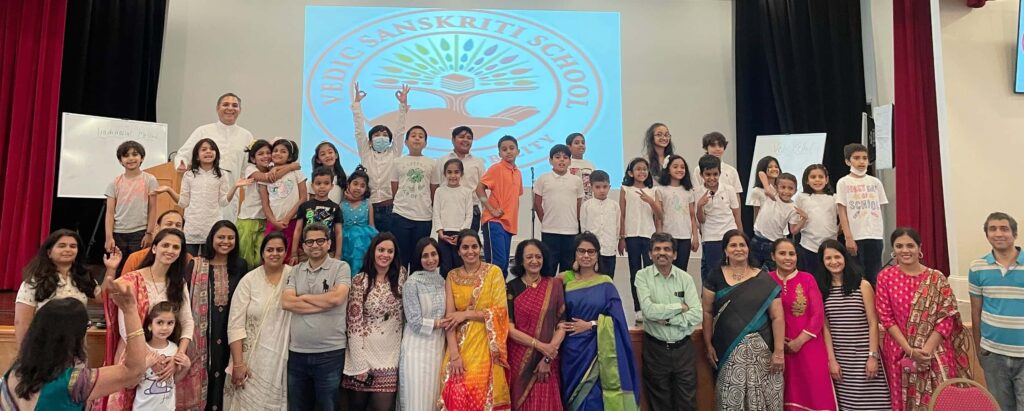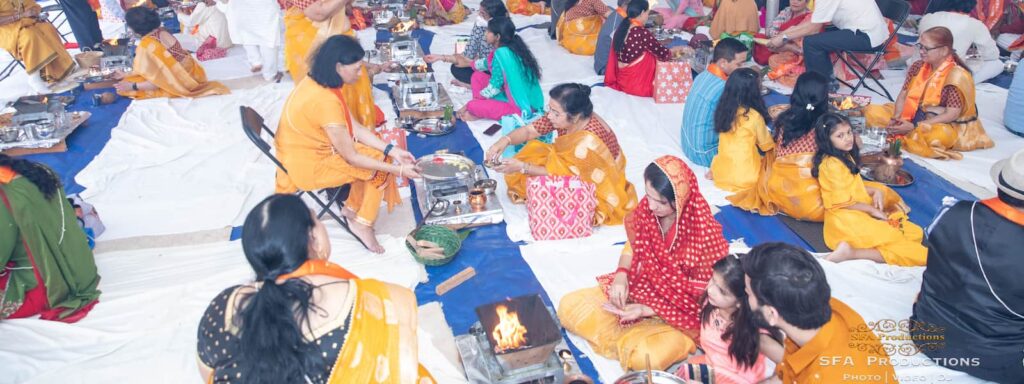An Arya is any person who believesin and worships the one true God, who lives accordingto the teachings of the Vedas, who follows the dictatesof Dharma, and who strives to spread the Light of Truthto all people. Being an Arya is a spiritual and moralcondition of an individual, and is in no way determinedby external factors such as race, gender, color or nationality.An Arya is a person who is, above all else, devoted toTruth.
An Arya worships and communes withthe one true God daily through the performance of Sandhyaand Agnihotra and lives according to the 10 Principlesof Dharma (righteousness), namely: steadfastness (dhritih),tolerance (kshama), contentment (damah), non-covetousness(asteyam), cleanliness (showcham), restraint of the senses(indriya nigrahah), practice (dhih), knowledge (vidya),truth (satyam) and benevolence (akrodhah). An Arya practicesnon-violence (ahinsa) towards all living things. An Aryadoes not use intoxicants or recreational drugs of anykind, nor indulge in sex outside of marriage. Also anArya always looks at only the good aspects of an individualand believes that his welfare lies in the welfare of theentire society.
Aryas are enjoined to perform Five Duties on a daily basis. The performance of these Five Great Daily Duties (Pancha Mahayajnas) ensures that the individual maintains a righteous relationship to all those he or she comes into contact with. These are:
- Brahma Yajna: The contemplation of and communion with God (Sandhya) twice daily, morning and evening.
- Deva Yajna: The burning of Samagree (odoriferous, nutritive, sweet, curative, and similar other substances) with Ghee (clarified butter) in the sacred fire while reciting the appropriate Veda Mantras, also called Homa, or the Agnihotra.
- Pitri Yajna: The ministering to the comfort of the elders, the wise and the learned, as well as serving the same individuals with love and faith. These duties are only carried out for the living individuals.
- BalivaishvaDeva Yajna: The feeding and support of poor and destitute individuals, as well as that of domestic as well as the wild animals.
- Atithi Yajna: The discharge of hospitality to guests, especially towards individuals who are wise and learned whose time of arrival and departure is unknown.
According to Vedic Dharma, God (AUM – pronounced as OM), the Soul (Purusha) and Nature (Prakriti) are the Three Eternal Entities, meaning that they have always existed and will forever continue to exist. Though later thinkers developed a number of varying metaphysical positions, the philosophy of the Vedas, the original Divine Revelation, clearly posits the beginningless existence of God, the Soul and Nature – an eternal truth that has come to be referred to as Traita or Traitavaada, meaning the ‘Wisdom of the Three’.
However, though God, the Soul and Nature are three distinct entities, they are at no time completely separate from one another. The relationship between God and Creation is that between the Pervader and that which is pervaded, respectively. God fills and pervades every corner of existence, including the eternal Soul of man.
The relationship between God and man, therefore, is more intimate than any other relationship an individual shall ever experience. Indeed, God knows all our thoughts and desires, our hopes and dreams, our fears and worries. He is our Eternal Father, our Highest Master, our True Friend, Teacher and Guide in one.
The Purusharthas are the goals of earthlylife. It is towards these ends that any noble societystrives. They are four in number:
- Dharma or Duty: This is the state in which one’sactions, serving the good of all, are in accordance withone’s own nature. Thus, to practice Dharma is toestablish congruence and harmony between one’s innerand outer life.
Swami DayanandaJi on Dharma: “The practice of equitable justicetogether with that of truthfulness in word, deed and thoughtand the like (virtues) – in a word, that which is in conformitywith the Will of God, as embodied in the Vedas – eventhat I call Dharma (righteousness). But the practice ofthat which is not free from partiality and injustice aswell as of untruthfulness in word, deed and thought, -in a word, that which is opposed to the Will of God, asembodied in the Vedas – even that I term Adharma (unrighteousness).”(Satyarth Prakash 726)
Dharma is the fundament of the Purusharthas,for without it, none of the others can be attained withrighteousness. And a good attained without righteousnessis paramount to a positive evil.v - Artha or Wealth: This is the attainment of wealthin any form (material or spiritual) through righteousmeans and the avoidance of goods gained through ignoblemeans.
Swami DayanandaJi on Artha: “Righteously acquired wealth alone constitutesArtha, while that which is acquired by foul means is calledAnartha.” (Satyarth Prakash 728) - Kama or Enjoyment: This is the attainment of satisfactionof one’s noble and righteous desires and the pleasurederived thereof.
Swami DayanandaJi on Kama: “The enjoyment of legitimate desireswith the help of honestly-acquired wealth (Artha) constitutesKama.” (Satyarth Prakash 728) - Moksha or Salvation: This is the attainment of freedomfrom the bonds of ignorance and its result, pain.
Swami DayanandaJi on Moksha: “The emancipation of the soul frompain and suffering of every description and a subsequentcareer of freedom in the All-pervading God and His immenseCreation for a fixed period of time and its resumptionof earthly life after the expiration of that period constituteMoksha or salvation. The means of salvation are the worshipof God, i.e., the practice of yoga, the performance ofrighteous deeds, the acquisition of true knowledge bythe practice of Brahmacharya, the society of the wiseand the learned, love of true knowledge, purity of thought,a life of activity and so on.” (Satyarth Prakash727)
Just as Dharma is the foundation ofthe Purusharthas, so, too, is Moksha the pinnacle of thesame. To attain Moksha is to reach life’s ultimategoal, which goes beyond even the bounds of earthly life,and leads one into a state of unbroken communion (Upasana)with God.It is important to note that VedicWisdom does not entail a life of mendicancy or severity.As long as one follows the dictates of Dharma, one isencouraged to enjoy the good things of this earthly life.God, in His Infinite Wisdom, has seen it fit to grantus the ability to experience great happiness and pleasurewhile on this earth, and we are encouraged to seek itout through righteous means.
Vedic Wisdom teaches that each individual goes through certain phases during the course of life, and that each of these phases should provide the opportunity to master the knowledge and skills required for making real progress toward the attainment of the Purusharthas. The systematic organisation of these phases, known as Ashrama, foresees three main segments in the life of man.
- Brahmacharya or Student Life: This is the stage of life in which the child receives a solid education in Vedic Dharma, including the sciences and the arts. It entails living a celibate and simple life, free from the distractions of sensuality and materialism, hearing and studying the Vedas, and developing virtuous qualities such as discipline, purity in thought, word and deed, cleanliness, humility, etc.
- Swami Dayananda Ji on the purpose of Brahmacharya: “Brahmacharya (or the 1st stage of life) is meant for perfecting one’s body and acquiring knowledge and culture.” (Satyarth Prakash 159)
Brahmacharya is the foundation of the noble life, for it imparts the knowledge of one’s proper place and function in society and in God’s creation, as well as training in skills one will make use of in all the subsequent stages of life. - Grihastha or Household Life: This is the stage of life in which the individual learns and practices a profession suited to their nature, i.e., their natural gifts and talents. It is also the stage in which a person usually gets married and starts a family, and entails the careful observance of prescribed duties and Yajnas or ritual sacrifices.
Swami Dayananda Ji on the purpose of Grihastha: “Grihastha (or the 2nd stage of life) is for the pursuit of useful occupation and professions, marriage, etc.” (Satyarth Prakash 159)
In many ways, Grihastha is the pillar of all the other phases of life, as Householders are the ones who support both children and the elderly on the one hand, as well as temples and priests on the other. - Vanaprastha or Retired Life: This is the stage of life in which the individual, having fulfilled his duties to his children and his community, withdraws from his professional role in society, making way for the next generation, and turns his attention inward, devoting himself more fully to the practice of yoga and the search for divine wisdom.
Swami Dayananda Ji on the purpose of Vanaprastha: “Vanaprastha (or the 3rd stage of life) is for meditation, concentration of the mind on abstruse subjects, the perfection of one’s character and the acquisition of divine knowledge.” (Satyarth Prakash 159)
For most people, this stage represents the culmination of all their efforts. They have the freedom to spend the remainder of their days absorbed in the contemplation and worship of God and in altruistic actions. However, for Brahmanas, there is one additional stage, which can be taken as an option. - Sanyasa or Renounced Life: This is the stage of life in which the individual renounces all ties to worldly existence, focusing all his energy upon the propagation of Vedic Wisdom and the teaching of the same to others.
Swami Dayananda Ji on the purpose of Sanyasa: “Sanyasa (or the 4th stage of life) is meant for disseminating knowledge of the Veda and the Shastras, practicing virtue and renouncing vice, preaching the gospel of truth and dispelling doubts and ignorance of the people. Therefore, it behooves Sanyasis to devote themselves assiduously to the preaching of Truth and enlightening the minds of the people who are in doubt, to the studies of the Vedas and the Shaastras and the propagation of the Vedic dharma, thereby promote the good (physical, social, mental and spiritual) of the whole world.” (Satyarth Prakash 159)
Brahmanas may also go directly from Brahmacharya to Sanyasa, as they are alone qualified through knowledge and piety to execute the duties of a true Sanyasi, and as it is sometimes the case that they have little if anything left to learn from the stages of Grihastha and Vanaprastha.
- The Arya Samaj was founded on the 10th of April, 1875 in Bombay, India by Maharishi Swami Dayananda Saraswati Ji.
- The Arya Samaj holds that, though God may be referred to by many names, the highest and most proper name of God is AUM (pronounced as OM).
- The Arya Samaj proclaims that the Vedas are the original revelation of God to man and that they contain all true knowledge necessary for the healthy and natural propagation of human society.
- The Arya Samaj maintains that man can enter direct communion with God, and therefore has no need for any kind of religious mediator or intercessor to petition salvation on one’s behalf, such as a prophet, priest, etc.
- The Arya Samaj engages in the practices of Sandhya (Divine Contemplation) and Agnihotra (Fire Sacrifice) as the proper means of praising, praying to and worshipping God.
- The Arya Samaj advocates the practice of Yoga as the most proficient means of attaining direct communion with God.
- The Arya Samaj promotes the worship of God in His true nature, i.e. without form or limitations. No image or material representation can capture the true nature of God. Therefore idols in any form are neither necessary nor desired in the worship of God.
- The Arya Samaj recognizes that both enjoyment and suffering are the natural and logical results of one’s actions (karma), and that wrongs can only be atoned for by the performance of good deeds.
- Aryas commonly greet each other with the Vedic salutation, ‘Namaste’, which means, ‘I bow unto the light within you’.
- Today, the Arya Samaj has presence in many countries around the world including Canada, the United States, Mexico, Guyana, Surinam, Trinidad, the United Kingdom, the Netherlands, Kenya, Tanzania, Uganda, South Africa, Malawi, Fiji, Mauritius, Pakistan, Burma, Thailand, Japan, Singapore, Hong Kong, New Zealand and Australia. This list is by no means exhaustive.
Aryas believe in the Vedas and according to the Vedas there is only one God for the entire Universe. The most excellent name of God is AUM (OM). Since God has infinite attributes it is common to use different names to refer to the different attributes of the same God. For example a man in a household will be called husband by the wife, father by the sons and daughters, son by the mother and so on, but all these names refers to the same individual describing his different attributes. AUM is the most comprehensive name of God. Other names denote some or only one aspect of Him. This is why AUM always signifies God and no one else while other names can stand for God and other things as well. For example Agni means God, as well as fire.
God being the Supreme and the creator of the Universe is called Brahma. God is called Vishnu because He pervades the entire movable and the immovable world. For making the wicked weep by punishing them He is called Rudra; for being blissful and benefactor of all He is called Shiva. The name Virat signifies God because He illuminates this universe. God is called Vishva because in Him reside all the worldly objects or in other words He resides in all of them. God is called Taijasa because He is self-luminous and gives light to the sun and other luminous bodies. Aditya is another name of God because He never perishes. God is called Prajna, because He has an intimate knowledge of the activities of the animate and inanimate world and is free from doubts. Mittra is the name of God because He loves all and is worthy of being loved by all. Varuna is the name of God because He accepts the self-disciplined, learned, those who desire salvation, the emancipated and the pious. Varuna may also mean God as He is the most excellent of all. God is called Indra as He is powerful and resplendent. God is called Brhaspati because He is the greatest of the great and the Lord of the entire universe. God is called Urukrama because He has infinite energy. God is called Ishvara as He is the possessor of might. God is called Savita because He creates the universe. He is the impeller.
God:
wins all and is Himself invincible
Knows just and unjust actions and instructs accordingly.
Brightens all.
Is worthy of adoration of all persons and not of condemnation.
Is himself an embodiment of happiness, gives happiness to others, and is entirely free from pain.
Is ever happy and free from grief; makes others happy and free from grief.
At the time of dissolution makes all the souls sleep in the unmanifested state.
Desires truth and is desired by the truthful.
Pervades all and is worthy of being known.
For all of the above reasons God is called Deva.
God is called Mangala because He is all blissful and is the cause of bliss to all souls. God is called Budha as He is all knowledge and is the source of knowledge of all souls. The name of God is Rahu because He is essentially one, without admixture of anything else, who rejects the wicked and frees others from the hands of the wicked. God is called Ketu as He is the abode of the universe, free from death and disease and frees the emancipated souls from diseases and sufferings during the period of salvation. God is called Mata (mother) because He has happiness and prosperity of all souls at heart just as an earthly mother, out of extreme love and kindness, desires happiness and prosperity for her offsprings. God is called Ganesa or Ganapati as He is the Lord or protector of groups of inanimate objects, prakriti etc., as well as of all souls. God is called Lakshmi, because He sees all the moving and unmoving universe and endows it with distinguishing marks and features as bodies with eyes, nose etc., and trees with leaves, flowers, fruits and roots, earth and water, with black and red, white colours and clay, stone, moon, sun etc., besides He sees all, is glory of all glories and is the goal or object of attainment of all the scriptures eg. Vedas etc.. God is called Sarasvati because He has all sorts of knowledge i.e. the exact knowledge of the word, the sense, their relation and application. Another name of God is Sesa because He remains free from birth and dissolution.
Similarly there are many other names of God but this certainly does not imply that there is more than one God.
Aum Shantih, Shantih, Shantih.
The word shantihmeans peace. The word shantihie. Peace is repeated three times because the world has three-fold pains, in other words there are three basic types of sufferings. These are Adhyatmika, Adhibhautika and Adhidaivika.
Adhyatmika – refers to the pains or the sufferings pertaining to body and soul. Such pains are a result of ignorance, lack of true knowledge, passions and hatred, physical pain and diseases.
Adhibhautika – refers to the pains and sufferings caused by enemies, dangerous animals for example tigers, snakes etc.
Adhidaivika – refers to pains and sufferings arising from natural causes such as excessive rains, earthquakes, extremes of heat and cold or from mental worry and distraction of the senses etc.
When reciting the above prayer the devotee is praying for wisdom, knowledge and guidance so that no living thing may suffer the pains due to any of the three types of sufferings. He prays:
May thou keep us away from these threefold pains and always guide us in beneficial actions. Because thou alone art the embodiment of good, thou alone do good to the whole world and give bliss to the pious salvation-seekers. May thou manifest in the hearts of all the living beings through Thy own grace so that all living beings embrace virtue, forsake vice, attain the supreme bliss and remain free from pains.
